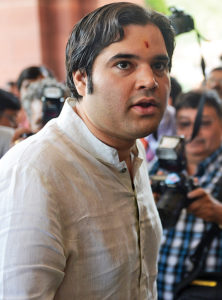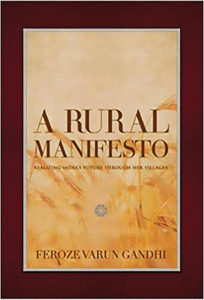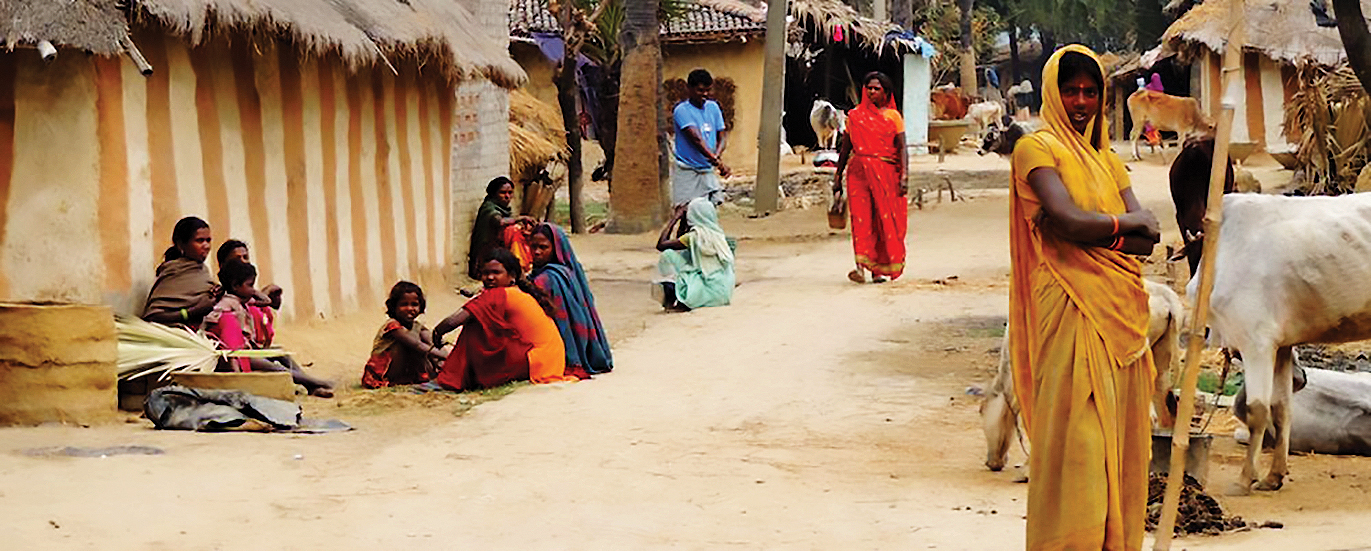Varun Gandhi’s magnum opus is a comprehensive and anguished exploration of the missed opportunities and botched policies that have kept the marginal farmer mired in debt and deprivation
The timing of this book is serendipitous, for a BJP Member of Parliament comes out with a book on the rural economy in the same winter that agrarian distress (among other factors) gives the Congress a mandate in three Assembly elections. Many commentators are now saying that the central issue in the 2019 election campaign will be the countryside. This makes the volume at hand an important reference source for the debate.
The very sight — and weight — of this whopping 844-page volume reminds one of Jawaharlal Nehru’s Discovery of India, not least because the author Feroze Varun Gandhi is the great-grandson of India’s first prime minister. However, the comparison ends here as the classic was written before Independence, when Indians had not started trying to revive an economy devastated by colonial exploitation. Moreover, the style of writing is completely different. Gandhi has chosen a researcher’s tone, mostly impersonal, with generous footnotes, to give readers a veritable primer on what exactly was going on in the hinterland while the cities were hurtling towards their superpower aspirations.

The title A Rural Manifesto: Realising India’s Future Through Her Villages suggests a political agenda but this narrative is shorn of political blame games. Even when various schemes and policies of successive governments are mentioned, there is absolutely no effort to score partisan brownie points. You are given no hint about which dispensation ruled India at that time, and would have to wrack your memory – or Google’s – to match the facts with the regime in power. This might be disappointing for political animals but gives the book a gravitas that is sorely needed in the national effort to find a solution to the farm crisis.
What took the writer on this quest? A rather poetic explanation is offered:
Travelling through the sullen bylanes of suicide-stricken villages in Bijnor, Bahraich, Kheri, Pratapgarh, Aligarh and Sitapur is a humbling and disconcerting experience. Even distributing Rs 50,000 per distraught marginal farmer family, totally my entire Parliamentary salary for the last 7.5 years, has had little impact, so deep is the scale of agrarian distress.
For a young reader, this state of affairs might be mystifying, for we keep hearing of government schemes, including insurance, soil health cards, subsidies and public procurement, that are meant precisely to better the lot of the farmer. On top of that, there are so many NGOs working precisely to ensure that marginal farmers take advantage of the schemes.
Moreover, a young reader could ask, in all innocence, if banks were nationalised in 1969 so that farmers could be better serviced, how is it that while the share of formal rural credit shot up from 29 per cent in 1971 to 64 per cent in 1991, it had declined to 57 per cent in 2002 and has stayed static since? Moreover, the marginal farmer — who makes up the bulk of the rural population but has a small proportion of the total land — has had very had little access to such credit due to his low status in society even after nationalisation of banks, which was purportedly done for this precise purpose.

The author’s concern for the marginal farmer pervades the book, reminding us of Mahatma Gandhi’s aphorism: “Recall the face of the poorest and weakest man you have seen, and ask yourself if this step you contemplate is going to be any use to him.”
The chapterisation is broadly in line with cabinet portfolios: Agri-cultural Inputs, Water Availability, Energy Access, Marketing, Non-Farm Income, Handicrafts, Labour, Education, Healthcare and Credit – the last is clearly the area in which successive policies have failed. This reviewer remembers attending classes in JNU, circa 1980, for a course on Production Conditions in Indian Agriculture in which the very first lecture was about how rural indebtedness must be wiped out so that farmers can begin on a clean slate. However, government did this only in a patchy manner and the same problems came back with a vengeance with the advent of cash crops that require expensive inputs, leading farmers into debt traps of a different kind. Even in 2020, it seems, our universities will be teaching students about the same deplorable conditions.
To give an idea of the historical perspectives that make the book such a valuable resource, here’s a paragraph:
Moral hazard has prevailed. The Integrated Rural Development Programme offered cheap banks credit for over 4 million households (1987), promoting a dependence on corrupt government officials (Dreze, 1990), while classifying millions as bank defaulters, barring their access to the formal credit sector. The official loan waiver of 1989 destroyed all credit discipline. Public sector banks, already burdened by low profitability and high non-performing assets, utilized liberalization and consolidation trends to march away from rural credit markets.
What is commendable about the author’s effort to find out what’s up in the villages is that the book records all the milestones: how the focus changed from major to minor irrigation; when fertiliser became so heavily subsidised that farmers started overusing it; in which pockets contract farming by private companies has worked; how electrification is not really a done deed. Without this overview, we would be ill equipped to engage in informed debates about possible solutions.
And then there’s biogas. The author says bluntly:
Frankly speaking, we lost momentum in our push for biogas over the last few decades. It remains a viable proposition for providing cooking fuel to our hinterland, allowing the village economy to continue to function based on its bovian assets.
Gandhi does not say so but we cannot help but think that the Uttar Pradesh government should, in fact, have seized the opportunity, when it banned cow slaughter, to give aged cattle a dignified retired life by utilising their dung for energy. Instead, the year 2018 ended with the news that farmers are locking up stray cows in government buildings like schools to save their crops from the abandoned animals. The imbroglio became worse when FIRs were lodged against the farmers who took this step.
Economists and politicians will continue their efforts to fix what is broken, but the effort cannot be too much of an academic exercise. The author feels that there is An intellectual and emotional disconnect between urban planners and the rural population but it could also be a cultural gap. Age-old practices, social customs, caste differences, fragmentation of holdings — all these can only be studied at a very local level, and solutions to problems found at that level. Top-down government and central planning has not worked so far, and all-pervading corruption still prevents the benefits of targeted schemes from trickling down to the lowest unit. Panchayati Raj has not brought the desired empowerment of the marginal farmer though it may have given communities better control over their resources.
If ‘Jai jawan’ has become quite an easy slogan for the ruling party to brand itself as nationalist, surely the focus of future governance must be ‘Jai kisan’. It is unconscionable that the increased output which has made India self-sufficient in food should leave farmers impoverished. For it is they who put food on our tables.





